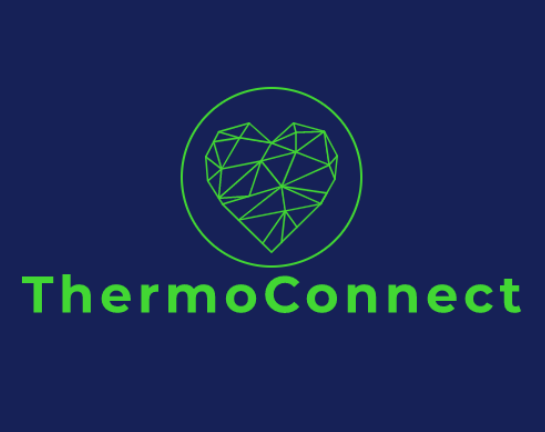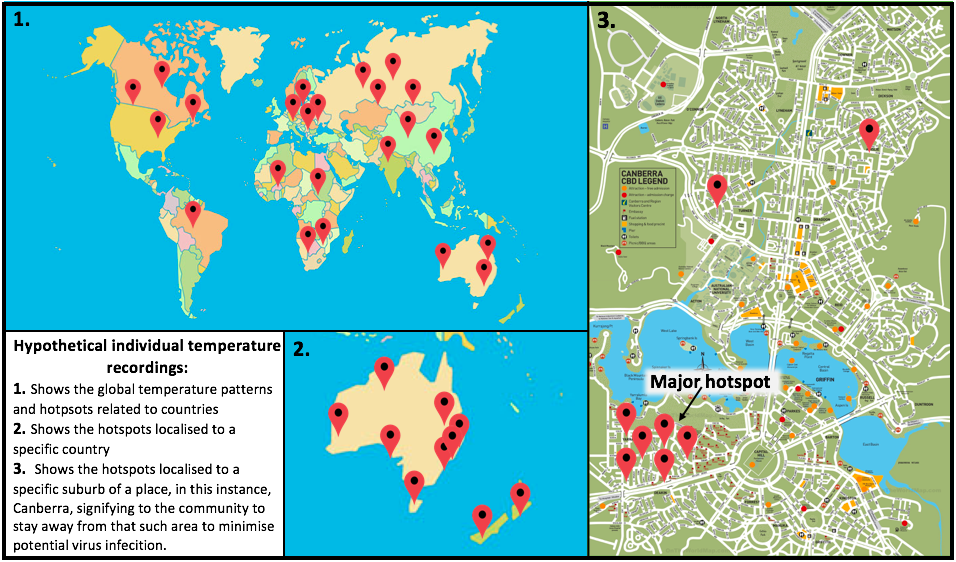
ThermoConnect | Making social isolation easy through connecting with temperature
Project Team:
Sarah Linning
Status:
New Idea
School/Organisation:
Griffith University Gold Coast
Social Purpose
Good Health & Wellbeing
What is the problem you found?
- Many people currently do not have access to a thermometer due to shops running out and shops closing. Therefore people have no way of knowing their temperature and whether or not they may be infectious.
- It is important to check temperature as it is one of the main ways that the corona virus is detected. As the virus multiplies in the persons body, gradually the body temperature of the individual increases causing a fever as a result of the immune system trying to combat the infection. Although some people are asymptomatic and do not exhibit a temperature, it is still important to be able to identify those who are symptomatic and do exhibit a temperature.
- People currently do not have a way of knowing where potential cases of corona virus are to a specific location in order to help them achieve better social distancing.
What is your opportunity?
How might we enable access to a thermometer for all people while also providing data on potential case locations to the public to minimise the virus spread?
Who is your audience?
People of the general public to provide a sense of security and awareness, adults as they are most likely to have phones and capability of measuring temperature and understanding data, children as a way to increase awareness for them to be proactive and vigilant in all other areas of protection such as hygiene, and lastly the government as a way to provide data on live potential increase of virus with location specifics providing greater implications and information for closures.
What Is Your Solution?
The solution to these problems would be to design a phone with an integrated infrared thermometer into it. This could either be built as a small scanner that can emerge from the phone or as a scanner integrated into the phone mechanics such as using a thermal regulator in facial recognition of phones or an additional scanner at the top of the phone allowing infrared thermal recognition of the person using the phone.
The data recorded from the temperature would then be transferred to an app that can process the temperature data and log the data. If the temperature results appear to be above the 'normal' temperature of 37 degrees, a hot spot will appear on a map corresponding to the general location of the person with the elevated temperature (not specific location to ensure privacy). This would enable notification to the person of having potentially contracted the corona virus, giving an immediate warning to them and others in the surrounding community. If a large number of people produce hotspots in a localised area, this would thus provide a signal to the rest of the surrounding population notifying them to be aware of the potential danger zones and to gravitate away from that area. This therefore provides an immediate isolation technique for areas of highest concern as people will stay away from the highest risk areas. This data tracking method would also provide up to date and immediate information for governments and health organisations across the world as well as for the public and the individual.
Phones are the best choice to incorporate an accurate infrared thermometer into as nearly everyone around the world has their own personal phone or has access to one, even in third world countries phones are becoming increasingly more prevalent in those communities. Phones enable quick and easy accessibility to monitor temperature and allow for connection with other people.

Support Required
Connections
Support is required with connections to people who would be able to assist in the inclusion of thermometers into phones and who understand the mechanics and physics behind it all.
Advice
Advice support in how to move forward with this idea.
Share this project
Challenge
Coronavirus Challenge
Location
Queensland

Comments